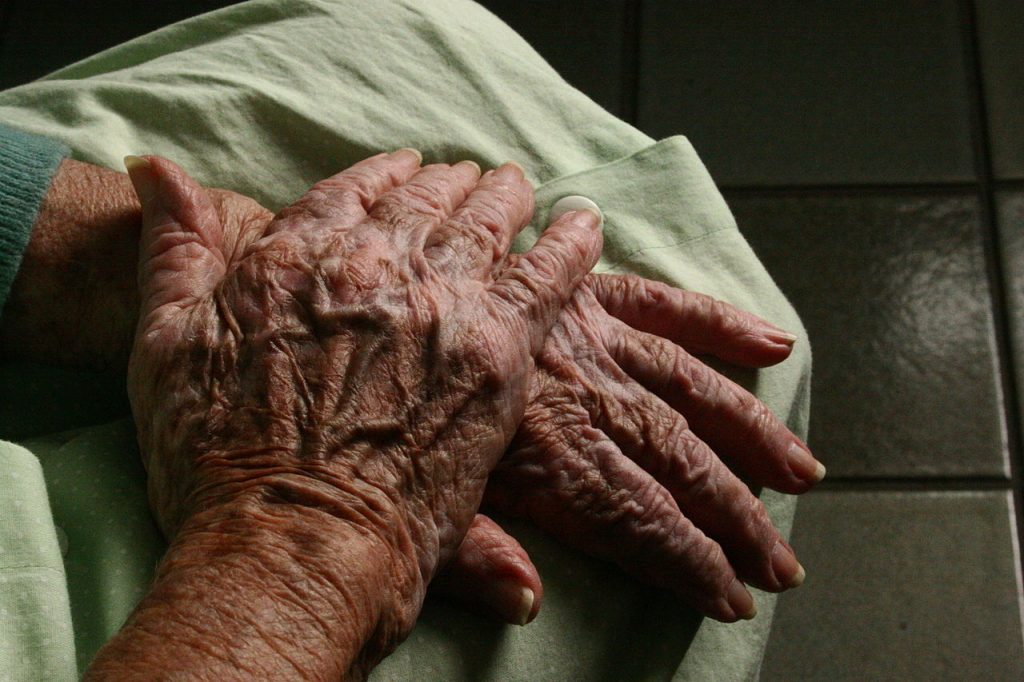159 Psychosocial Development in Late Adulthood
Martha Lally; Suzanne Valentine-French; and Dinesh Ramoo
Learning Objectives
- Explain the stereotypes of those in late adulthood and how they impact their lives
- Summarize Erikson’s eighth psychosocial task of integrity vs. despair
- Explain how self-concept and self-esteem affect those in late adulthood
- Identify sources of despair and regret
- Describe paths to integrity, including the activity, socioemotional selectivity, and convoy theories
- Describe the continuation of generativity in late adulthood
- Describe the relationships those in late adulthood have with their children and other family members
- Describe singlehood, marriage, widowhood, divorce, and remarriage in late adulthood
- Describe the different types of residential living in late adulthood
- Describe friendships in late life
- Explain concerns experienced by those in late adulthood, such as abuse and mental health issues
Ageism
Stereotypes of people in late adulthood lead many to assume that aging automatically brings poor physical health and mental decline. These stereotypes are reflected in everyday conversations, the media, and even in greeting cards (Overstreet, 2006). Age is not revered in the United States, and so laughing about getting older in birthday cards is one way to get relief. The negative attitudes people have about those in late adulthood are examples of ageism, or prejudice based on age. The term ageism was first used in 1969 and, according to Nelson (2016), ageism remains one of the most institutionalized forms of prejudice today.

Nelson (2016) reviewed the research on ageism and concluded that when older individuals believed their culture’s negative stereotypes about those who are old, their memory and cognitive skills declined. In contrast, older individuals in cultures that held more positive views on aging, such as China, did not demonstrate cognitive deficits. It appears that when one agrees with the stereotype, it becomes a self-fulfilling prophecy, or the belief in one’s ability results in actions that make it come true.
Being the target of stereotypes can adversely affect individuals’ performance on tasks because they worry they will confirm the cultural stereotypes. This is known as stereotype threat, and it was originally used to explain race and gender differences in academic achievement (Gatz et al., 2016). Stereotype-threat research has demonstrated that older adults who internalize the aging stereotypes will exhibit worse memory performance, worse physical performance, and reduced self-efficacy (Levy, 2009).
In terms of physically taking care of themselves, those who believe in negative stereotypes are less likely to engage in preventative health behaviours, less likely to recover from illnesses, and more likely to feel stress and anxiety, which can adversely affect immune functioning and cardiovascular health (Nelson, 2016). Additionally, individuals who attribute their health problems to their age have a higher death rate. Similarly, doctors who believe that illnesses are just natural consequence of aging are less likely to have older adults participate in clinical trials or receive life-sustaining treatment. In contrast, those older adults who possess positive and optimistic views of aging are less likely to have physical or mental health problems and are more likely to live longer. Removing societal stereotypes about aging and helping older adults reject those notions of aging is another way to promote health and life expectancy among the elderly.
Minority status: Older minority adults accounted for approximately 21 percent of the US population in 2012, but are expected to reach 39 percent of the population in 2050 (US Census Bureau, 2012). Unfortunately, racism is a further concern for minority elderly already suffering from ageism. Older adults who are African American, Mexican American, and Asian American experience psychological problems that are often associated with discrimination by the white majority (Youdin, 2016). Ethnic minorities are also more likely to become sick, but less likely to receive medical intervention. Older minority women can face ageism, racism, and sexism, often referred to as triple jeopardy (Hinze, Lin, and Andersson, 2012), which can adversely affect their life in late adulthood.
Poverty rates: According to Quinn and Cahill (2016), the poverty rate for older adults varies based on gender, marital status, race, and age. Women aged sixty-five or older were 70 percent more likely to be poor than men, and older women aged eighty and older have higher levels of poverty than those younger. Married couples are less likely to be poor than non-married men and women, and poverty is more prevalent among older racial minorities. In 2012 the poverty rates for white older men (5.6 percent) and white older women (9.6 percent) were lower than for Black older men (14 percent), Black older women (21 percent), Hispanic older men (19 percent), and Hispanic older women (22 percent).
Media Attributions
- Figure 9 33 © marina guimarães is licensed under a CC BY-SA (Attribution ShareAlike) license

